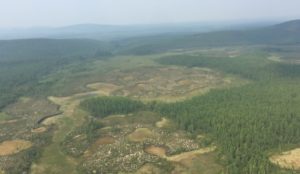My second book, Tunguska: A Siberian Mystery and Its Environmental Legacy, came out with Cambridge University Press in 2022.

In 1908 the Tunguska explosion in Siberia knocked down an area of forest larger than London. Most scientists believe that a fragment of an asteroid or a comet caused the blast, but neither a crater nor unmistakable remnants of a meteorite have ever been found. Over the last century, the mysterious nature of the event has prompted a wide array of speculation and investigation, including from science fiction writers and voluntary researchers. Some have even explained Tunguska as a nuclear explosion triggered by aliens. This book recounts the intriguing history of the Tunguska event and the investigations into it. Foregrounding the significance of mystery in environmental history, it shows how efforts to understand the explosion have shaped the treatment of the landscape, how uncertainty allowed alternative forms of knowledge to enter scientific conversations, and how cosmic disasters have influenced the past and might affect the future.
Reviews of Tunguska have appeared in The New York Review of Books, Times Literary Supplement, H-Environment, and The Russian Review. The American Society for Environmental History named Tunguska a finalist for the George Perkins Marsh Prize for the Best Book in Environmental History. It also receive an honorable mention for the Reginald Zelnik Book Prize for an outstanding monograph on Russian, East European, or Eurasian history from the Association for Slavic, East European, and Eurasian Studies.
